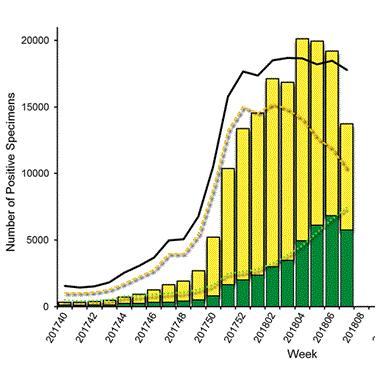The one silver lining from this truly awful flu season is that the worst just might be over.
Of the past 34 flu seasons, 20 peaked in February or March -- a fact that could make a certain groundhog's prognostications a bit more accurate. Recently released CDC data suggests that the 2017-2018 flu season has peaked this month.
The CDC monitors data collected from clinical labs all over the country. Patients who show up at clinics and hospitals with flu-like symptoms are often tested, and some of those results make their way to the CDC. It is important to note that this is not a "random sample" of Americans, like a political opinion poll. Instead, it's a biased sample that consists of sick people who voluntarily went to the hospital. As a result, it doesn't provide direct information on the percentage of Americans who got the flu.
Still, the data are useful. By monitoring sick individuals and determining which have the flu and which don't, the CDC can estimate when we have hit peak flu season. For the past few weeks, CDC data showed that, of the sick people who went to the hospital and got tested, about 26% of specimens were positive for influenza. Now, in Week 7 of 2018, it has dropped to 25%.

Source: CDC
Finally, we appear to have turned the corner.




